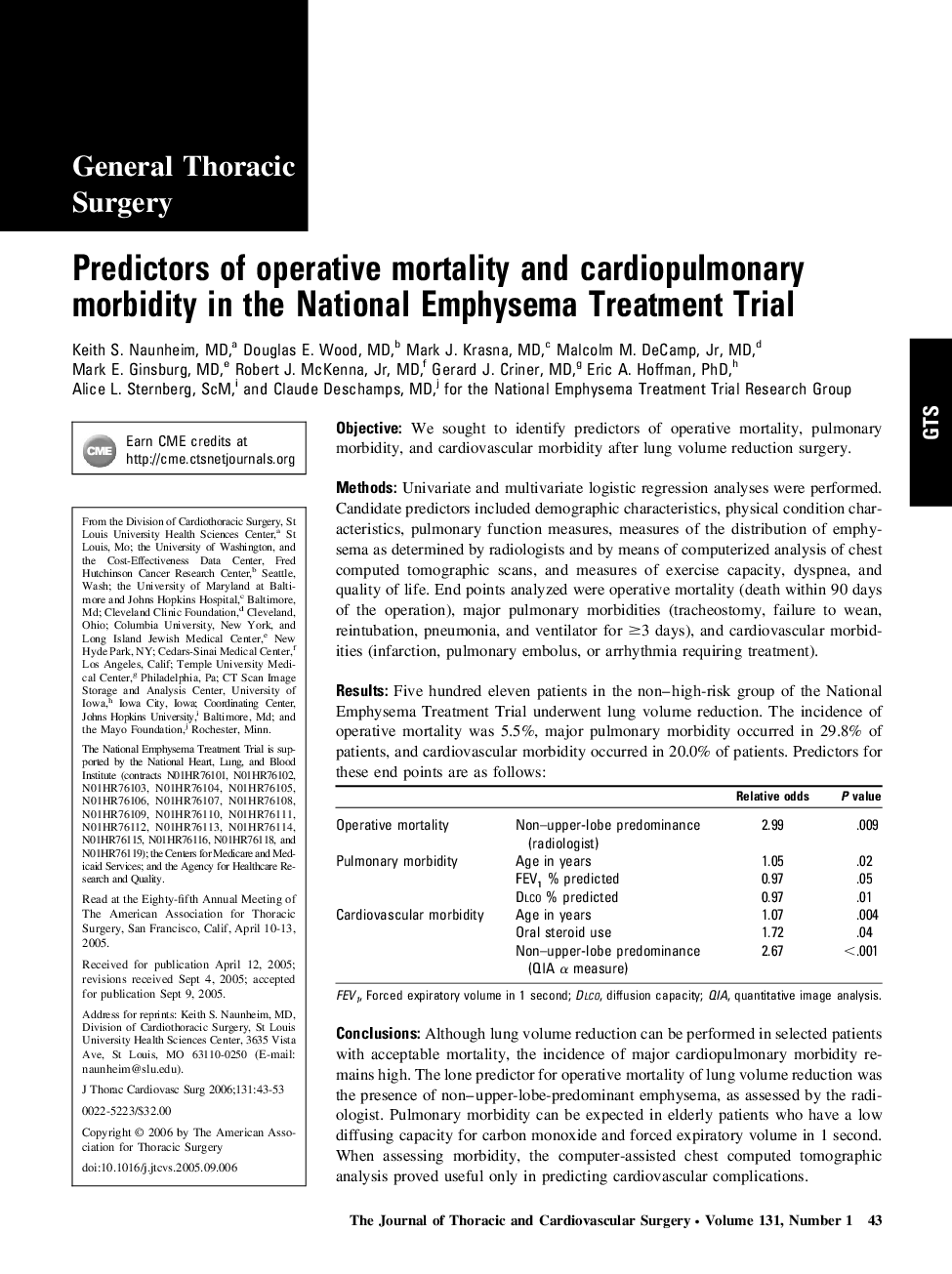| کد مقاله | کد نشریه | سال انتشار | مقاله انگلیسی | نسخه تمام متن |
|---|---|---|---|---|
| 2987204 | 1578714 | 2006 | 11 صفحه PDF | دانلود رایگان |

ObjectiveWe sought to identify predictors of operative mortality, pulmonary morbidity, and cardiovascular morbidity after lung volume reduction surgery.MethodsUnivariate and multivariate logistic regression analyses were performed. Candidate predictors included demographic characteristics, physical condition characteristics, pulmonary function measures, measures of the distribution of emphysema as determined by radiologists and by means of computerized analysis of chest computed tomographic scans, and measures of exercise capacity, dyspnea, and quality of life. End points analyzed were operative mortality (death within 90 days of the operation), major pulmonary morbidities (tracheostomy, failure to wean, reintubation, pneumonia, and ventilator for ≥3 days), and cardiovascular morbidities (infarction, pulmonary embolus, or arrhythmia requiring treatment).ResultsFive hundred eleven patients in the non–high-risk group of the National Emphysema Treatment Trial underwent lung volume reduction. The incidence of operative mortality was 5.5%, major pulmonary morbidity occurred in 29.8% of patients, and cardiovascular morbidity occurred in 20.0% of patients. Predictors for these end points are as follows: Relative oddsP valueOperative mortalityNon–upper-lobe predominance (radiologist)2.99.009Pulmonary morbidityAge in years1.05.02FEV1 % predicted0.97.05Dlco % predicted0.97.01Cardiovascular morbidityAge in years1.07.004Oral steroid use1.72.04Non–upper-lobe predominance (QIA α measure)2.67<.001FEV1, Forced expiratory volume in 1 second; Dlco, diffusion capacity; QIA, quantitative image analysis.Full-size tableTable optionsView in workspaceDownload as CSVConclusionsAlthough lung volume reduction can be performed in selected patients with acceptable mortality, the incidence of major cardiopulmonary morbidity remains high. The lone predictor for operative mortality of lung volume reduction was the presence of non–upper-lobe-predominant emphysema, as assessed by the radiologist. Pulmonary morbidity can be expected in elderly patients who have a low diffusing capacity for carbon monoxide and forced expiratory volume in 1 second. When assessing morbidity, the computer-assisted chest computed tomographic analysis proved useful only in predicting cardiovascular complications.
Journal: The Journal of Thoracic and Cardiovascular Surgery - Volume 131, Issue 1, January 2006, Pages 43–53